Photoactive Materials and Energy
The sun's radiation provides more energy at the surface of the earth in one hour than is consumed by humans in a year. Our research focuses on the development of catalysts capable of harnessing this energy for the generation of fuels and other environmentally relevant reactions. Nanostructured photoactive, composite materials based on titania (TiO2) are promising candidates because it is earth abundant, inexpensive, stable, non-toxic, and has been demonstrated to have a high photocatalytic activity.
Successful photocatalysts must perform multiple functions including:
- Harvest light (preferably in the visible wavelength range)
- Generate charge carriers of sufficient redox potential to complete the reaction of interest
- Hinder recombination of charge carriers
- Adsorb and activate reactant molecules
- Release product molecules
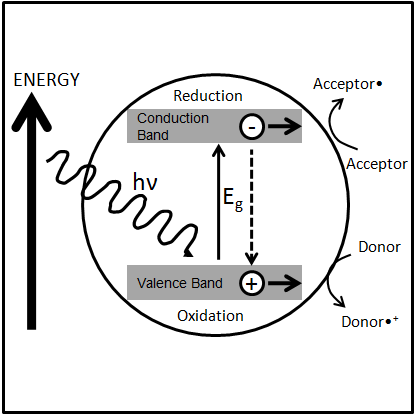
Our approach is to understand the defect structure and how it influences the processes at play. We aim to control the nanoarchitecture of catalyst materials and the coordination chemistry in order to reduce the heterogeneity of sites and drive the reactions to completion. We also focus on elucidating the mechanism of reaction in order to understand and control product selectivity. To achieve these goals, our research has focused on several classes of materials including:
- Materials with a high number of solid-solid interfaces
- Sputtered titania films with sub-stoichiometric amounts of oxygen and texture
- Tetrahedrally coordinated titania sites on silica surfaces
- One dimensional titania nanostructures (titania nanorods and nanotubes)
- Composites of titania and graphene
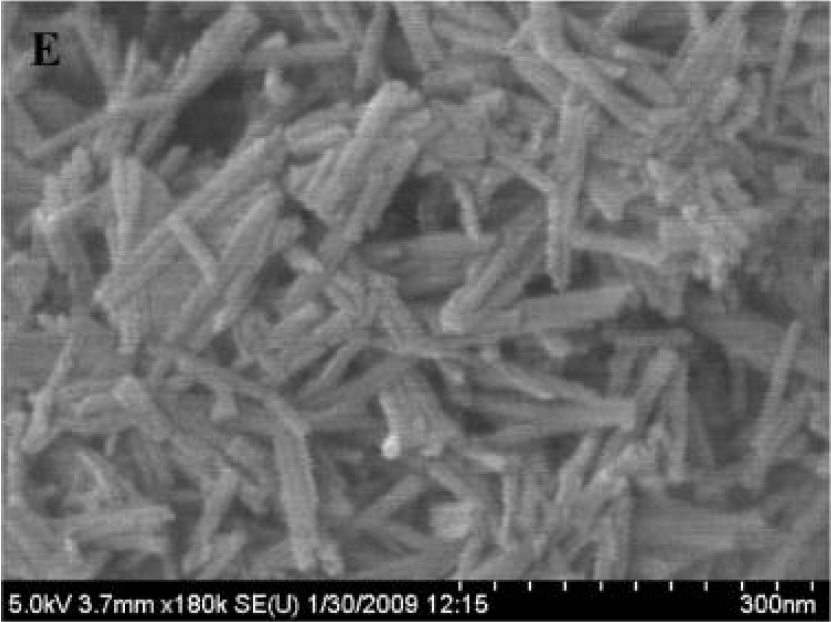
SEM image ofHydrothermally synthesized titania nanotubes. 1
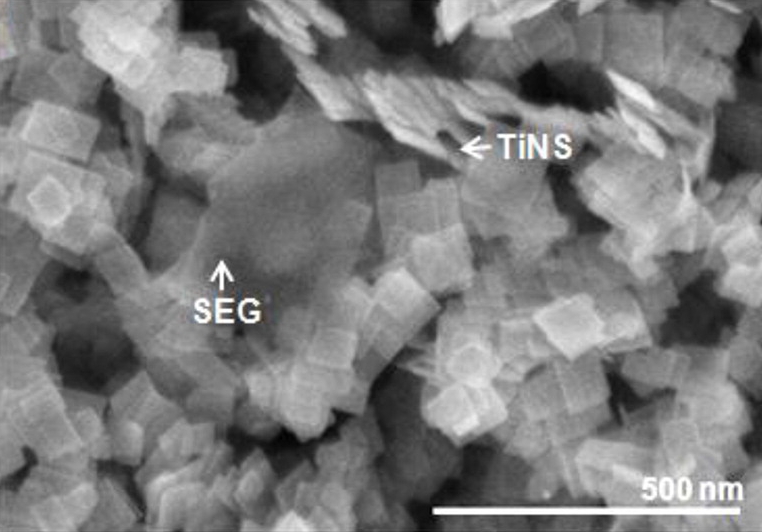
SEM image of a composite of titania nanosheets (TiNS) and solvent exfoliated graphene (SEG).2
For each of the materials we study, we perform characterization (UV-Vis, SEM, TEM, BET surface area, XPS, Raman, FTIR), screen for photocatalytic activity (GC-FID), and probe adsorption under reaction conditions (QCM).
References
- B. Vijayan, N. Dimitrijevic, T. Rajh, K.A. Gray. (2010) "Effect of calcination temperature on photocatalytic reduction and oxidation of hydrothermally synthesized titania nanotube," Jour. Phys. Chem. C, 14:30:12994-13002.
- Y.T. Liang, B. Vijayan, O. Lyandres, K.A. Gray, M.C. Hersam (2012). "The effect of dimensionality on the photocatalysis of carbon-titania nanosheet composites: Charge transfer at nanomaterial interfaces," Journal of Physical Chemistry Letters, 3:1760-1765.
- K. Schwartzenberg, K.A. Gray (2012). "Nanostructured Titania: The Current and Future Promise of Titania Nanotubes," Catalysis Science and Technology, 2 (8), 1617 - 1624;DOI: 10.1039/C2CY00538G.
Nanotoxicology
The revolution in nanotechnology promises many environmental and human health benefits such as dramatic improvements in efficiency, reduced resource use and waste production, and astounding improvements in medical diagnostics and therapeutics. Yet, the risks posed by nanotechnology to ecological and environmental health have not been rigorously assessed, and without these data a meaningful regulatory framework protecting human and environmental health and guiding the development of nanomaterials cannot be formulated. Nanostructured titania (Nano-TiO2) is among the most extensively used engineered nanomaterials (ENMs) and its presence has been detected in the effluent of wastewater treatment plants and exterior facade runoff, indicating potential exposure of aquatic organisms to nano-TiO2. Therefore, our lab probes the fundamental interactions of nano-TiO2 in biological and environmental systems at increasing scale, from subcellular through ecosystem, in order to develop a testing and measurement strategy that comprehensively characterizes the ecotoxicity of nano-TiO2. We utilize interdisciplinary knowledge of nanomaterial synthesis and characterization, toxicology, microbial ecology and molecular microbiology. Specific research topics include:
- Development of multi-parameter, high-throughput screening (HTS) assays for toxicity screening of various nano-TiO2;
- Fate, transport and environmental stability of nano-TiO2 under environmental relevant conditions.
- Roles of intrinsic physicochemical properties and external environmental factors in regulating nano-TiO2 ecotoxicity;
- Responses of aquatic microbial communities to nano-TiO2 exposure.
References
T. Tong, C.T.T. Binh, J.J. Kelly, J-F Gaillard, K.A. Gray (2013). "Cytotoxicity of commercial nano-TiO2 to Escherichia coli assessed by high-throughput screening: Effects of environmental factors," Water Research, in press, DOI: 10.1016/j.watres.2013.02.008.
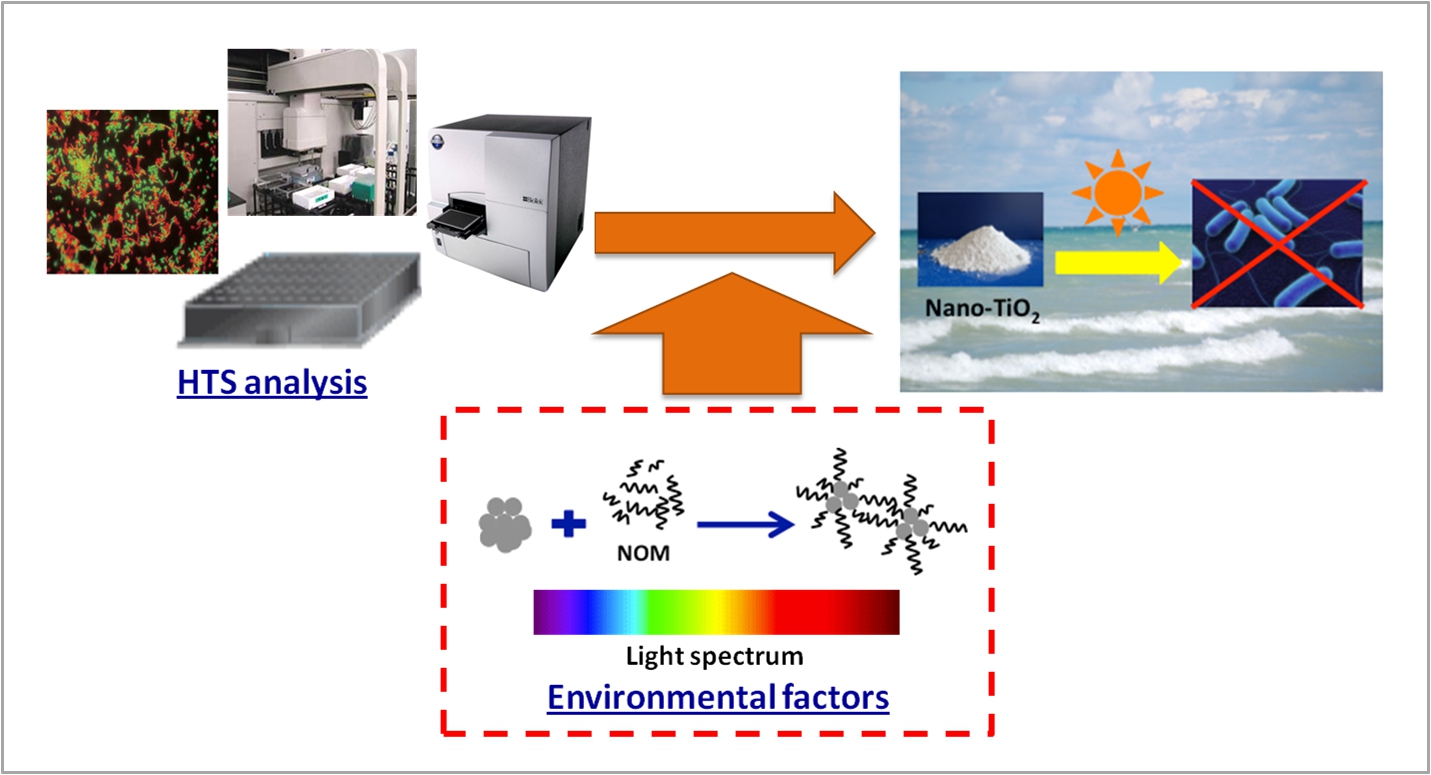
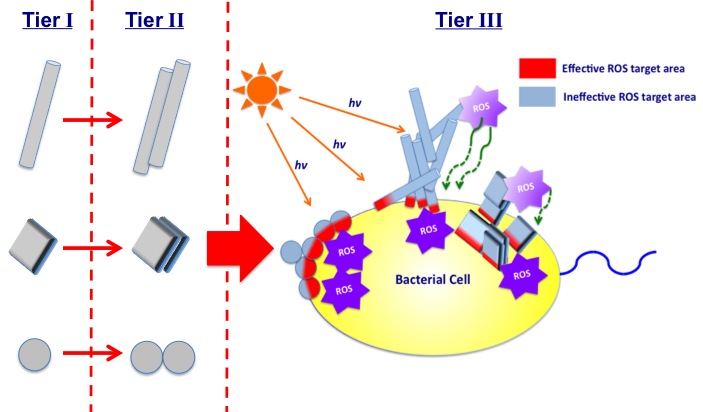
Ecological Research
The Gray group has years of experience in ecologically relevant interdisciplinary research with emphasis on the human heath, urban environment and planning, the ecological health, and public policy. Currently we are focused on environmental processes that deal with the general study of contaminant fate in aquatic and terrestrial systems. Specifically, we employ multiple tools such as computer modeling and the analytical techniques of GC/MS and ICP/MS to trace the removal or transformation of organic and metal compounds in systems such as drinking water treatment, surface waters, and wetlands. We are particularly interested in understanding the coupled effects of organic and metal contaminants in treatment or natural processes. In addition, we are focusing on the role of invasive species in wetlands and waterways--in terms for contaminant transfer and habitat degradation--and how they affect the human and ecological health as well as the broader public policy and resource management.
Invasive Species Management
The group is currently exploring the use of chemical attractants to improve the success of targeted capture or trapping of the common or European carp (Cyprimus carpio). The common carp is the classic invasive species for it is among the first species to have been introduced successfully outside of its natural range. At the present time, the carp has a global distribution and is widely implicated in aquatic resource degradation, particularly in North American and Australia. The species is especially destructive to benthic vegetation and its foraging uproots submerged plants, resulting in increased turbidity in the water column and loss of habitat for native species. Control and eradication methods typically depend on physical barriers, targeted capture or non-selective poisoning. The latter is the most effective method, albeit more destructive to native species. Our current effort involves identifying an effective environmentally derived attractant, developing a protocol and testing apparatus to gauge the attractant's effects as a function of parameters such as concentration, water quality, temperature, fish size/age and then how to simply engineer the attractant's release in the field deployment of traps.


Energy Highway
We aim to examine the potential of using roadway buffer strips to produce bioenergy crops sustainably and simultaneously provide ecosystem services. Currently, the vast majority of buffer strips along the roads and highways in the U.S. are not economically productive and have significant costs associated with maintenance (NCHRP 2005). Given the amount of land taken up by these strips, they present a valuable opportunity to increase domestic energy production while simultaneously providing ecosystem services through the restoration of native species, erosion control, and storm water management. However, vegetation by roadways needs to be salt-tolerant and capable of growing in marginal soil (from a nutrient perspective) which is potentially contaminated with heavy metals (Pb, Zn, Cu, Ni and Cr) from roadway runoff (NCHRP 2005). This project investigates the potential of bioenergy crops (switchgrass, miscanthus, and native grasses) as an energy source and their ability to grow in contaminated environments with limited nutrient.

Ecological Forecasting
One of the on-going works in the Gray group is the development of an ecological forecasting tool that accurately reflects the complex ecological and human interactions of food webs in order to promote sound resource management. An important feature of the tool, which focuses on legacy PCB and Pb contaminations in Lake Michigan, is its links to the lower levels of the food web that are key in structuring trophic dynamics and contaminant transfer. Our model integrates the interplay between the human and ecological factors that influence trophic structure and function, and hence, the ecological and economic health of an ecosystem. It will help determine how to focus socioeconomic resources on those interventions that yield optimum economic and ecosystem health benefits.
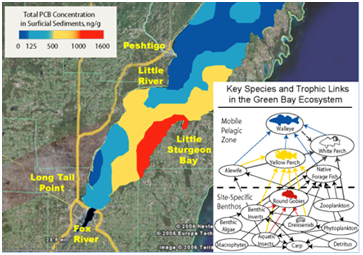
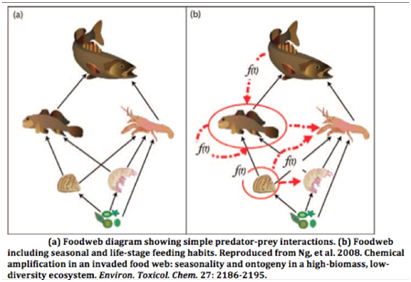
Our ecosystem model builds on a stage-structured, seasonal bioaccumulation model that we developed in Calumet Harbor, Lake Michigan, a highly altered food web dominated by invasive species. Our simulations (both static and dynamic) of this highly altered ecosystem yielded surprising predictions of the bioaccumulation of PCBs, which are contrary to conventional thinking and policy recommendations. The primary driver for these surprising contaminant dynamics resulted from increases in benthic fluxes following successive zebra mussel (Dreissena polymorpha)-round goby (Neogobius melanostomus)-quagga mussel (Dreissena bugensis) invasions in the Harbor. These Ponto-Caspian species have also emerged in Green Bay, where we observed the similar feedback mechanisms with profound implications for contaminant transfer. We have found evidence of an "unconventional" bioaccumulation pattern of PCBs (as predicted by the model) and are in the process of expanding the contamination data via GC/MS analysis of real samples in order to apply model to the larger Green Bay aquatic ecosystem.
Urban Sustainability
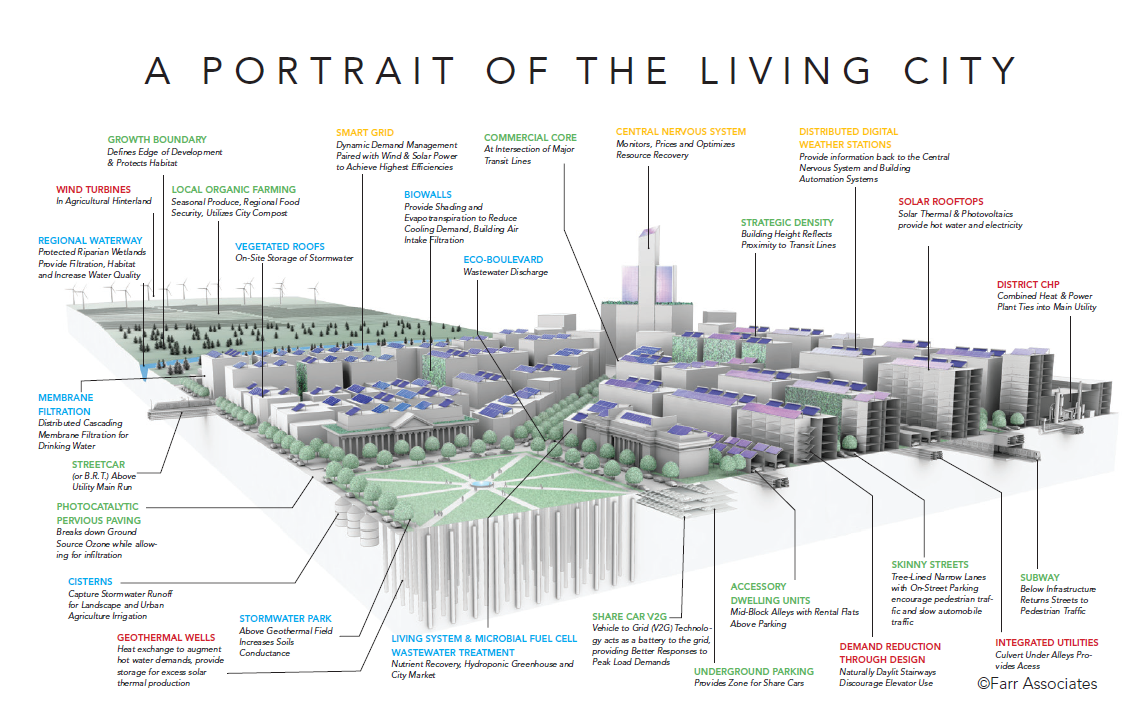
Since 2008 more than half the world's population now lives in urban areas creating a precarious condition where 3.5 billion people occupy only about 2% of the earth's land area. In post-industrialized economies, such as Japan, the U.S., Canada and Australia, where more than 80% of the population resides in cities, the migration from rural to urban areas unfolded slowly over more than a hundred years. In contrast, the demographic shifts that are occurring in the developing world are unprecedented in both their rates and scale. It is estimated that an urban area supporting a million people will be developed every 5 days for the next 40 years, effectively doubling the urban face of the planet at about 10 times the rate of previous eras. The explosion in urban growth and development, however, is happening in countries that also suffer serious constraints in natural, fiscal, administrative and technical resources. The challenge for cities, then, is to grow in wealth and well-being without tipping.
Cities may be one of our greatest inventions, but in 2011 the typical city in U.S and elsewhere is woefully inefficient in the way it transports its citizens, supplies information, manages its water supply, produces food and energy, and treats its wastes. The development and operation of today's cities injure ecosystems and contribute heavily to global climate change. We must reinvent our cities, both old and new, by devising strategies for sustainable urban design, which is based on the ecological principles of material and energy cycling and on policies and incentives that make business sense. Sustainable cities, both the exploding cities of Asia and shrinking cities of the U.S. and the E.U., must achieve a nearly complete departure from the 20th Century urban model to create a "Living City" incorporating principles of density, diversity, and flexibility around the "operating system of nature". Infrastructure is decentralized and integrated with natural ecosystems. Energy is harvested from renewable sources and transmitted along smart grids. The processes that sustain the Living City are linked and managed through a "central nervous" or information system, which optimizes resource recovery and maximizes profitability through integration, monitoring and accurate pricing. Urban development in Living Cities evolves to reflect regional conditions and local cultural heritage. Living Cities are walk-able and bike-able, and obviate the need for private automobiles for most transit. Finally, a Living City is ecologically regenerative, economically vibrant and socially equitable.
